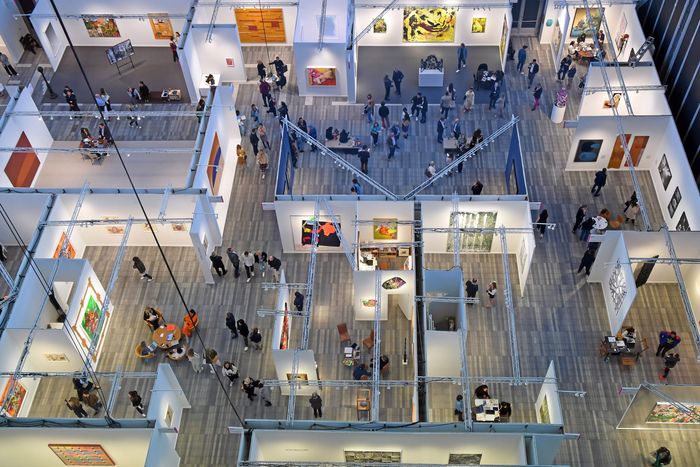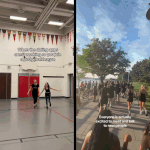
Two weeks ago, the art fairs came through town like a traveling circus. They were here; now they’re gone. The New York Times called the Frieze “exciting.” It credited NADA with “authenticity.” Everyone had wonderful things to say about the Independent.
Like American politics, the art fair is a system that no one likes, but no one knows how to fix. They’re going to happen, so they might as well happen with everyone more or less onboard. Everyone involved is always complaining yet in constant motion, moving from one fair to another. Works are crated, unpacked, installed, sold (or not), and shipped out to the buyer. Everyone goes to them — the curators, collectors, advisers, artists, art critics. But what are people really seeing?
Paintings. And more paintings. Art fairs are now painting fairs. Specifically, figurative-painting fairs. Why? The main reason is that art fairs are essentially built for them. Paintings are very portable. They come in all shapes and sizes, but they are what the art world is built to accommodate and move. But wouldn’t it be more interesting if other types of art could be shown there? It might be possible to indulge other ideas, aesthetics, styles, conceits. Something, anything, to shake up the sameness.
Art fairs can be seen as a corrective to the biennial system, which doesn’t exclude painting so much as it emphasizes all manner of installation, sculpture, video, interventions, and performance. The biennial system purports to be against the market, as if that were even possible. But it has its own enormous funds, and so it doesn’t need to sell anything. Except itself. Others foot the bills for the packing, shipping, advertising. Muckety-mucks travel to see these shows and appear on one another’s panels and symposia. The same cast shows up in every other photograph.
So we have a kind of standoff. In art fairs, everyone gets a vote. At biennials, a handful of curators select. Pick your system. Either way, a monoculture forms. All painting versus almost no painting. Both seem deadening, entropic.
At the art fair, you come to a market to sell your wares. You speed up time, make more connections in a week than you could otherwise in years. They are now located in Basel, Berlin, Paris, Hong Kong, and São Paulo; in Aspen, East Hampton, and Marfa. Art fairs go where the money is. The money goes to where the art is.
On the plus side, there are new names and a lot of diversity in many of the fairs. Artists of color, women, and underrepresented artists get market traction. Perhaps this makes the whole thing worth it.
There are very few judgments about the art. Hardly a discouraging word is written about anything. Everyone likes everything. Is this possible? Most people only go on the opening day, and on that day it’s almost impossible to see anything. Then the dealers go home and leave assistants to maintain the booth. Then it’s on to the next art fair or biennial.
It is not possible to drop out when as much as half of sales are made at these tent-city souks. If one gallery bails, others will take their place. No one can pull out now unless everyone does. None of this is a complaint. It’s a description of a well-run system that never stops. Maybe that’s what they’re here for — to keep going? At what, no one asks. Everyone looks busy. Each more or less on their own. This is no way to run an art world. But it’s what we’re stuck on now.




